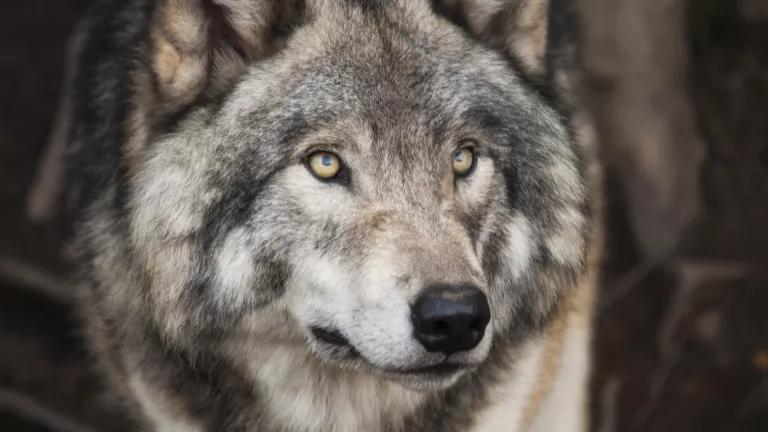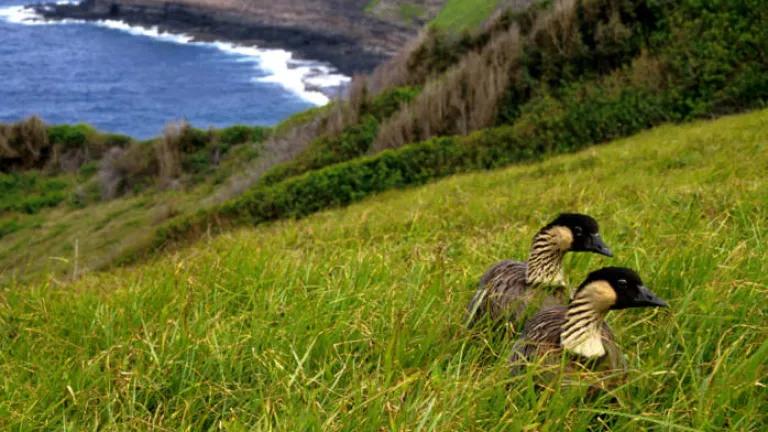Wolves and Livestock: Tools Like Turbo Fladry Prevent Losses
Reducing the risk of wolf predation on livestock is key to ensuring both people and wolves can thrive throughout wild and working lands.

2020 is shaping up to be a big year for wolves. The federal government has brazenly worked to strip Endangered Species Act protection from wolves across the country. Some states with established wolf populations, like Montana and Idaho, have pushed for aggressive policies to see more wolves killed by hunters, trappers or the government. And Colorado voters have held the fate of the wolf in their hands with Proposition 114—a ballot initiative that would direct the state to make a plan to reintroduce wolves. There is much at stake with these decisions, especially because of how valuable wolves are to many people and to healthy, balanced ecosystems.

Wolves are highly social animals that hunt in packs, targeting physically unfit and diseased prey animals.
Despite their many benefits, wolves spark fierce debate because they can contribute to livestock losses in rural areas. In their hunting pursuits, wolves prefer wild prey over livestock and cause only a small fraction of total livestock losses in states with an established wolf presence (losses are more often caused by weather, disease, dogs, etc.). Still, wolf-caused livestock mortalities can be challenging emotionally and economically for affected ranches, and some may be hit harder than others. Proactive, nonlethal solutions can prevent the needless deaths of both livestock and wolves and offer some common ground for groups that hold different views on wolves.

Bones from an old livestock carcass lie in a Northern Rockies pasture.
Wolves are instinctively fearful of anything that is new or unfamiliar in their environment. Turbo fladry is a simple type of temporary electric fencing—usually consisting of red nylon flags that are sewn onto a strand of wire—that takes advantage of this trait to deter wolf activity in certain areas. Wolves avoid turbo fladry because they are fearful of the motion of the flags and they receive a shock if they eventually become bold enough to approach and touch the electrified wire. Through scientific research and the experiences of ranchers across the Great Lakes, Northern Rockies and West Coast states, fladry has proven to be a highly effective fencing tool that ranchers can use to protect vulnerable livestock from wolves.

Turbo fladry blowing in the wind during installation on a calving pasture in Idaho.
NRDC has long partnered with agencies, non-profit organizations, and communities to increase support for ranchers in wolf country who want to deploy turbo fladry to protect their livestock. Demand for this tool is currently growing across multiple regions. Our collaboration with the federal agency Wildlife Services has led to additional capacity and funding to help meet these demands. As interest in turbo fladry continues to grow, it is critical that the tool is used properly in order to ensure that its effectiveness endures. Our newly released publication, “Installing Turbo Fladry: An Informational Guide” explains key considerations in using this tool and provides a user-friendly, step-by-step guide to installation. This guide is designed to be a resource to help landowners and practitioners who want to use turbo fladry, but don’t have much experience with this unique tool.

NRDC Wildlife Advocate (blog author) pounds in posts to hang fladry on a calving pasture in Montana.
Irrespective of how societal decisions in 2020 impact wolf populations in different regions of the country, wolves are here to stay. People will continue to live alongside wolves, but this doesn’t mean that the deadly cycles of wolves killing livestock, and people killing wolves in response, has to continue. Turbo fladry contributes to the growing toolkit that can help both people and wolves to thrive on wild and working lands.



